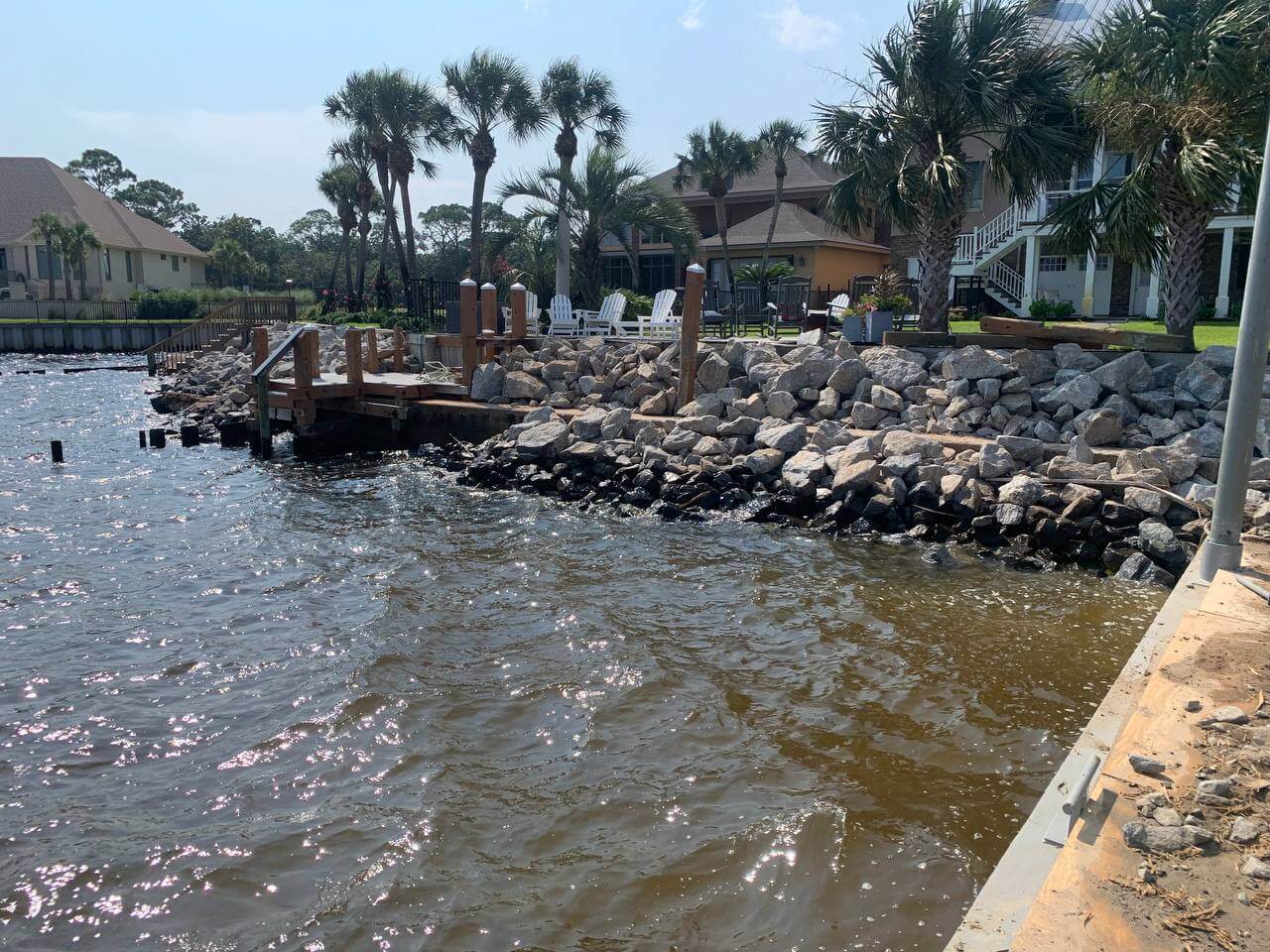What is the Difference Between Bulkheads and Seawalls?
Bulkheads and seawalls are two terms that are often interchanged, but there are a few key differences between them. Both structures protect the shoreline by limiting soil erosion caused by pounding waves. Reaching out to marine construction companies on the Florida Gulf Coast is always a great choice if you are looking at ways to protect your waterfront property. These professionals understand the importance of providing shoreline stabilization, whether seawall construction or a bulkhead design.
Bulkheads vs. Seawalls
Understanding the differences between a bulkhead and a seawall is essential if you want to protect your waterfront property. A bulkhead is a vertical shoreline stabilization structure that retains surcharge loads and the soil behind the load. However, a bulkhead only provides a minimal amount of protection against waves. On the other hand, a seawall protects frontline waters by limiting shoreline erosion, wave overtopping, and storm surges.
Where to Install Bulkheads?
Bulkheads are most often used at marinas for shoreline stabilization. Keeping bulkheads well-maintained is essential in maximizing their lifespan. Hiring professional marine construction companies for designing bulkheads is key to safety. These professionals can create bulkheads for the ultimate strength and performance while keeping local conditions, such as the soil, elevation, and the frequency of waves.
Seawall Construction Methods
A seawall can be built with a variety of materials. Discussing your needs with a seawall construction company is important in choosing the best material for residential seawall. A seawall construction company will also consider many factors in designing a seawall, such as a storm surge, wave overtopping, toe scour, direct wave force action, and the uplift caused by the waves.
Comparing your available options can help you determine the best type of seawall for limiting soil erosion while protecting your property on the Florida Gulf Coast. Working with an experienced seawall construction company is always crucial in making sure it is built to last for decades while giving you the best protection against waves.
Here is an overview of the different types of seawall construction methods:
Concrete Seawalls
Concrete seawalls are often built in places that experience heavy waves frequently. These seawalls are built with large blocks of concrete for the best protection. Concrete seawalls are often anchored deep within the soil until they reach bedrock. These seawalls can usually last anywhere from 30 to 50 years with proper maintenance and care.
Riprap Seawalls
Riprap seawalls combine boulders large and small with chunks of concrete. These seawalls often have different plants and grass growing around the rocks. Riprap can also be used to reinforce older seawall construction. One of the most significant benefits of using riprap during seawall construction is that it’s highly effective at limiting soil erosion.
Boulder Seawalls
Boulder seawalls are built with large boulders and rocks that are held together using mortar. A boulder seawall looks excellent and is more aesthetically pleasing compared to other options. These seawalls are best used in areas that only see moderate waves because they are less durable than concrete.
Sheet Pile Seawalls
Sheet pile seawalls are another option, but they aren’t as aesthetically pleasing compared to other types of seawalls. One of the advantages of building sheet pile seawalls is that it’s highly effective at deflecting moderate-sized waves and limiting any soil erosion. These sheet pile seawalls are also anchored deep within the soil and installed against the bank for additional support.
Benefits of Seawall Construction
The advantages of installing a seawall for your waterfront property are wide-ranging. One of the biggest reasons to consider a seawall is that it plays a crucial role in preventing soil erosion. Seawalls also help to protect against surge flooding, which is an all too common issue for anyone living near the Florida Gulf Coast. Residential seawall construction is also a long-term solution for protecting your property, as it can last for decades with proper maintenance.
Closing Thoughts
Protecting your property from the waves against the shore is a top priority for anyone living near the Florida Gulf Coast. Investing in seawall construction is worth the money in giving your property much-needed protection from soil erosion. Getting a few quotes from marine construction companies can help you determine the best method for shoreline stabilization to ensure your property remains safe from mother nature.
